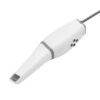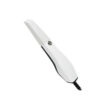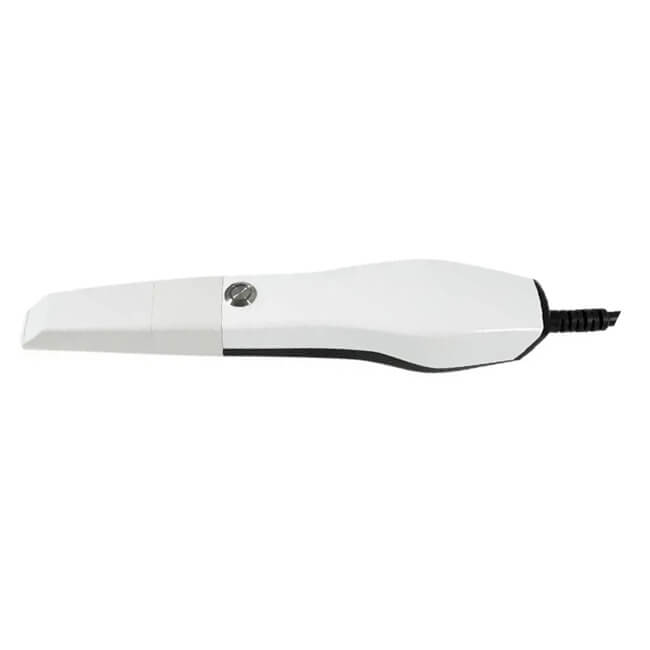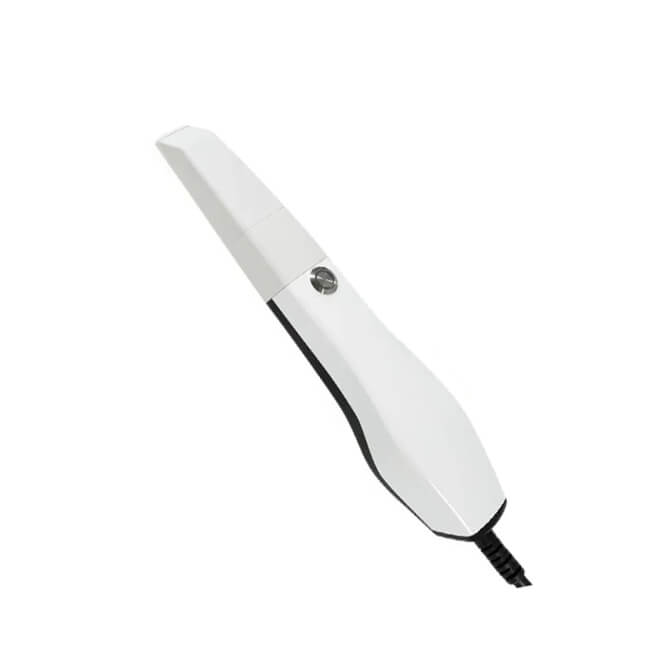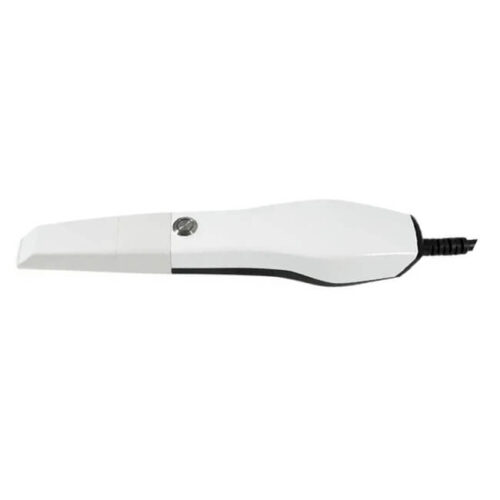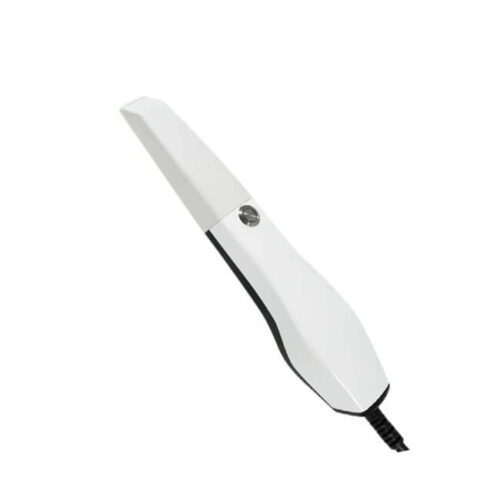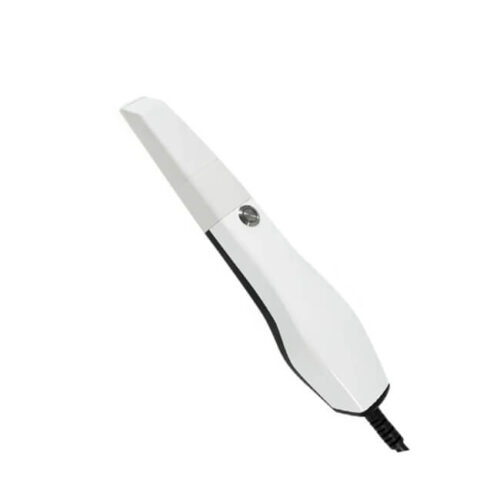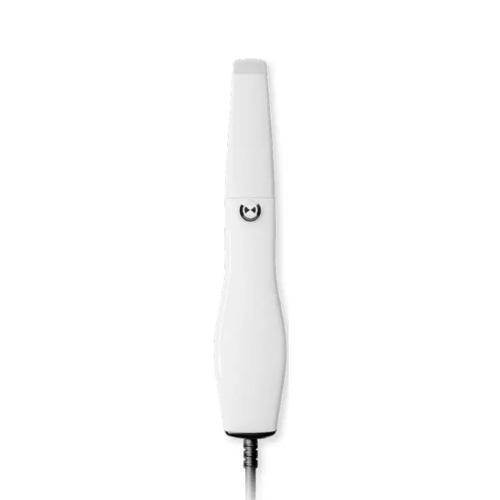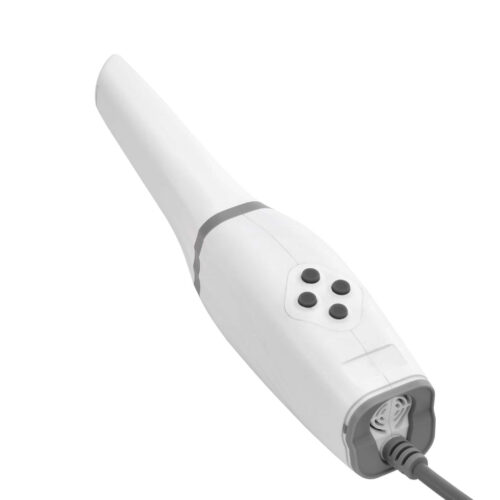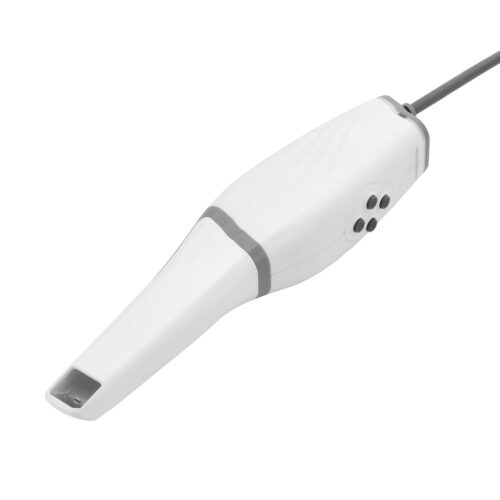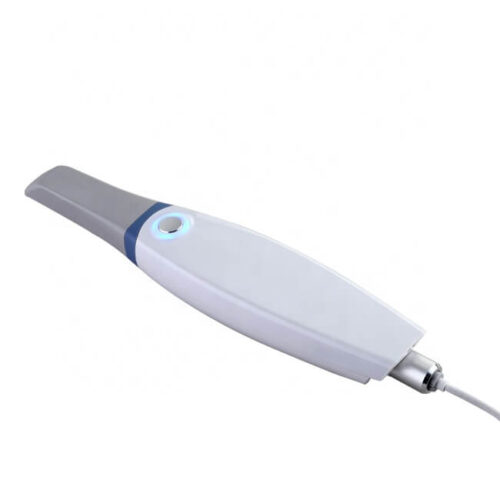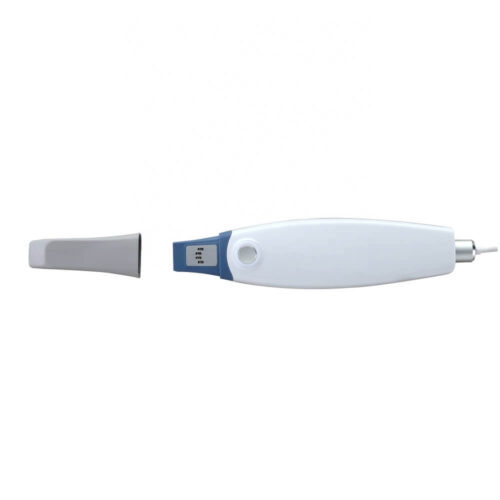dental scanner intraoral Safety Certifications
Intraoral dental scanners are sophisticated devices crucial for digital dentistry, capturing detailed 3D images of a patient’s oral cavity. Ensuring the safety and efficacy of these devices is paramount, and they must adhere to various regulatory standards and certifications.
1. FDA Clearance (USA):
– The U.S. Food and Drug Administration (FDA) regulates intraoral scanners as medical devices. They typically fall under Class II devices, requiring manufacturers to demonstrate substantial equivalence to a previously approved device through the 510(k) premarket notification process.
2. CE Marking (Europe):
– The CE mark indicates conformity with European health, safety, and environmental protection standards. Intraoral scanners must comply with the Medical Device Regulation (MDR) 2017/745 to be marketed in the European Union. This includes rigorous clinical evaluations and risk assessments.
3. ISO 13485 Certification:
– This international standard specifies requirements for a quality management system in the medical device industry. It ensures that the manufacturer consistently meets customer and regulatory requirements.
4. RoHS Compliance:
– The Restriction of Hazardous Substances Directive (RoHS) restricts the use of specific hazardous materials in electrical and electronic equipment. Compliance ensures that the device does not contain harmful levels of materials like lead, mercury, and cadmium.
5. IEC 60601 Series:
– This is a series of technical standards for the safety and effectiveness of medical electrical equipment. Compliance with IEC 60601-1 (general requirements) and IEC 60601-1-2 (electromagnetic compatibility) is essential for ensuring the device operates safely and reliably within its intended environment.
6. CSA Certification (Canada):
– The Canadian Standards Association (CSA) provides certification ensuring electrical safety and performance according to Canadian regulations.
By adhering to these certifications and standards, intraoral dental scanners provide safe, effective, and reliable performance, contributing to improved patient outcomes in modern dental practices.
List Reference Technical Parameters of “dental scanner intraoral”
When evaluating a dental intraoral scanner, several technical parameters are crucial for determining its performance and suitability. Here are the key reference parameters:
1. Accuracy and Precision:
– Trueness: Measures how close the scan is to the real shape.
– Precision: Assesses the scanner’s repeatability.
2. Scanning Speed:
– Time taken to capture a full arch scan, typically measured in seconds.
3. Light Source:
– Types include LED, structured light, and laser technologies.
4. Resolution:
– The scanner’s ability to capture fine details, usually indicated in micrometers (µm).
5. Field of View (FOV):
– The area that the scanner can capture in a single frame, affecting the scanning speed and ease of capturing larger areas.
6. Depth of Field (DOF):
– The range within which the scanner can capture accurate details, measured in millimeters (mm).
7. Color Scanning:
– Capability to capture scans in color, aiding in the differentiation of soft tissue from teeth.
8. Data Formats:
– Common output formats include STL, PLY, and OBJ, essential for compatibility with various CAD/CAM systems.
9. Weight and Ergonomics:
– The physical weight and design of the scanner, impacting user comfort over extended use.
10. Software Integration:
– Compatibility and integration features with dental CAD software for creating restorations, orthodontics, and implants.
11. Touchscreen Display:
– Some scanners come with integrated displays for real-time visualization of the scanning process.
12. Wireless Capability:
– Scanners may offer wireless functionality for ease of use and reducing clutter in the dental operatory.
13. Battery Life:
– For wireless models, the duration of usage per full charge.
These parameters provide a comprehensive overview of what to consider when selecting a dental intraoral scanner, impacting both performance and clinician experience.
List Product features of “dental scanner intraoral”
A dental scanner intraoral is a cutting-edge tool designed to enhance the precision, efficiency, and comfort of dental procedures. Here are the key product features:
1. High-Resolution Imaging: Captures detailed 3D images of the oral cavity with high resolution, ensuring accurate representations of dental structures.
2. Real-Time Scanning: Allows for instantaneous capturing and visualization of images during patient examinations, improving workflow efficiency.
3. Ergonomic Design: Features a lightweight and user-friendly design to enhance comfort for both the dentist and the patient during use.
4. Wireless and Mobility Options: Some models offer wireless capabilities, providing greater flexibility and ease of movement in the dental office.
5. Color Scanning: Captures images in true color, which aids in better diagnosis and treatment planning by clearly differentiating between various dental tissues.
6. Autoclave Sterilizable Tips: Comes with detachable tips that can be sterilized using autoclave methods, ensuring high standards of hygiene and patient safety.
7. Seamless Software Integration: Integrates with popular dental software and digital workflows, enhancing compatibility with existing practice management systems.
8. Fast Processing Speed: Delivers quick scan processing times, reducing patient chair time and optimizing clinic efficiency.
9. Touchscreen Interface: Often equipped with an intuitive touchscreen interface for easy operation and quick access to functions.
10. Patient Comfort: Minimizes the need for traditional dental impressions, reducing discomfort and gag reflex in patients.
11. Cloud Storage: Supports secure cloud-based storage and sharing of intraoral scans, facilitating collaboration and communication with dental labs and specialists.
12. Comprehensive Data Output: Provides various data formats compatible with CAD/CAM systems, facilitating the manufacture of crowns, bridges, and other dental restorations.
13. Education and Training Resources: Many brands offer extensive training programs and support materials to help dental professionals maximize the device’s capabilities.
These features collectively make intraoral dental scanners a valuable addition to modern dental practices, enhancing diagnostic capabilities and patient care quality.
List Buyer Types of “dental scanner intraoral”
When considering the buyers of dental intraoral scanners, we can categorize them into the following main types:
1. Dental Practices:
– General Dentists: These professionals utilize intraoral scanners for a variety of routine dental procedures like restorations, including crowns and bridges.
– Orthodontists: They require accurate 3D models of teeth and jaws to plan and manage orthodontic treatments effectively.
– Prosthodontists: These specialists depend on precise digital impressions for fabricating prosthetics like dentures, inlays, onlays, and more.
2. Dental Laboratories:
– Laboratory Technicians: Require precise digital impressions from dental practices to create accurate dental prostheses, crowns, bridges, and aligners. The high resolution and detail from intraoral scanners aid in reducing errors and improving fit.
3. Dental Schools and Institutions:
– Educational Purposes: Dental schools invest in intraoral scanners to teach students the latest in dental technology, ensuring they are well-versed in modern digital dentistry tools before entering professional practice.
4. Corporate Dental Chains:
– Healthcare Management Organizations: Large dental chains invest in intraoral scanners to standardize and streamline their workflow, enhance patient records, and improve service quality across multiple branches.
5. Mobile and Teledentistry Services:
– Teledentistry Providers: Use portable intraoral scanners for remote consultations, allowing for the capture and sharing of accurate dental images with specialists who may not be on-site.
6. Research and Development Entities:
– Manufacturers: Companies developing new dental products or improving existing ones invest in intraoral scanners for product testing, research, and development.
– Universities and Research Institutions: Utilize these scanners for advanced research in dental care advancements and innovations in imaging technologies.
Each of these buyer types values the accuracy, efficiency, and technological advancements that dental intraoral scanners bring to their specific needs, driving forward both patient care and dental science.
dental scanner intraoral Accessories Upgrades and Custom Manufacturing Options
Intraoral dental scanners have revolutionized modern dentistry by providing precise digital impressions for various dental procedures. To optimize the performance of these scanners, several accessories, upgrades, and custom manufacturing options are available.
Accessories:
1. Scanner Tips: Various sizes and designs cater to different patient needs, ensuring comfort and accuracy.
2. Protective Sleeves: These disposable covers maintain hygiene and prevent cross-contamination.
3. Calibration Kits: Regular calibration ensures the scanner’s accuracy and prolongs its lifespan.
4. Charging Stations: Efficiently charge scanners and manage batteries, reducing downtime.
5. Sterilization Units: Dedicated units for sterilizing reusable parts and accessories maintain a rigorous hygiene protocol.
Upgrades:
1. Software Enhancements: Regular updates can introduce new functionalities, improve scanning speed, and enhance user interface.
2. High-Resolution Cameras: Upgrading the camera components can achieve better image quality, leading to more accurate impressions.
3. Wireless Connectivity: Enhancing scanners with wireless capabilities improves workflow by enabling seamless data transfer to other digital dental systems.
4. Battery Performance: High-capacity batteries can reduce the frequency of charging, providing longer uninterrupted operation.
5. Speed Boosts: Firmware upgrades can enhance processing speeds, reducing overall chair time for patients.
Custom Manufacturing Options:
1. Tailored Scanner Tips: Custom-made tips designed to fit specific patient populations or unique anatomical requirements.
2. Personalized Handles: Ergonomically designed handles to suit individual dentist preferences for a comfortable and steady grip.
3. Branding Customization: Incorporate clinic or brand logos on devices to reinforce brand identity.
4. Exclusive Material Options: Choose materials that improve the scanner’s durability, weight, or handle texture, tailored to the practitioner’s needs.
5. Specialized Software: Custom software solutions can integrate seamlessly with the existing practice management systems, enhancing workflow efficiency.
In conclusion, enhancing intraoral dental scanners through accessories, upgrades, and custom manufacturing can significantly improve clinical outcomes and patient experience. Investing in these options ensures a cutting-edge practice and optimal patient care.
List Quality Control and The Manufacturing Process of “dental scanner intraoral”
Quality Control and Manufacturing Process of a Dental Intraoral Scanner
#### Manufacturing Process
1. Design and Development:
– Conceptualization: Design teams collaborate with dental professionals to conceptualize the scanner.
– Prototyping: Develop initial prototypes to evaluate functionality and ergonomics.
– Software Integration: Incorporate advanced imaging and data processing software.
2. Component Sourcing:
– Optics: High-resolution cameras and advanced lighting systems.
– Electronics: Microprocessors, circuit boards, and sensors sourced from reputable suppliers.
– Materials: Durable medical-grade plastics and metals for the scanner body.
3. Assembly:
– Precision Assembly: Assembled in clean rooms to prevent contamination, using automated and manual processes.
– Calibration: Calibrate sensors and cameras for accuracy.
– Software Installation: Load and configure imaging software.
4. Testing:
– Functionality Testing: Ensure all systems (optics, electronics, software) work as intended.
– Durability Testing: Simulate real-world usage to test for durability.
– Calibration Verification: Re-check calibration after environmental testing (temperature, humidity).
5. Packaging:
– Sterilization: Sterilize and pack using sterile packaging to meet medical standards.
– User Manual Inclusion: Include detailed user manuals and software guides.
#### Quality Control
1. Incoming Inspection:
– Component Verification: Verify materials and components meet specifications before assembly.
– Supplier Audits: Conduct regular audits of suppliers’ quality control processes.
2. In-Process Quality Control:
– Workstation Checks: Inspect and approve each assembly stage.
– Automated Inspections: Use automated tools to check alignment and component placement.
3. Final Inspection:
– Comprehensive Testing: Perform detailed testing on each finished scanner, including imaging quality and software performance.
– Compliance Check: Ensure units meet regulatory requirements like FDA, CE, and ISO standards.
4. Post-Market Surveillance:
– Feedback Collection: Collect data from users to identify potential issues.
– Continuous Improvement: Implement improvements based on feedback and technological advancements.
This streamlined process ensures that each dental intraoral scanner meets high standards of accuracy, durability, and effectiveness.
How to use “dental scanner intraoral”
Using a dental scanner intraoral is a relatively straightforward process designed to capture precise digital impressions of a patient’s oral cavity. Here’s a step-by-step guide:
1. Preparation:
– Ensure the patient is comfortably seated.
– Clean the patient’s teeth to remove any debris that might interfere with scanning.
– Brief the patient on the process to keep them relaxed.
2. Setting up the Scanner:
– Turn on the intraoral scanner and ensure it’s fully charged or connected to a power source.
– Open the accompanying software on your computer or tablet.
3. Calibration:
– Calibrate the scanner according to the manufacturer’s instructions. This step ensures accuracy and might vary slightly between different brands and models.
4. Starting the Scan:
– Hold the scanner like a pen, keeping a steady grip.
– Begin by scanning one quadrant of the mouth, then move sequentially to cover the entire oral cavity.
– Keep the scanner tip close to the teeth, but avoid direct contact to prevent discomfort and inaccurate data.
5. Capturing Data:
– Move the scanner slowly and steadily.
– Use the on-screen guide to ensure you’re capturing all necessary angles.
– Re-scan any areas as needed if the software indicates missing or unclear data.
6. Processing and Review:
– Once the scan is complete, the software will process and compile the data into a 3D digital model.
– Review the model for any gaps or inaccuracies.
– Make adjustments or perform additional scans if necessary.
7. Storing and Using the Data:
– Save the digital impressions in a secure system.
– Use the data for treatment planning, creating physical models, or sending to dental labs for appliances like crowns or aligners.
8. Post-Scan Care:
– Clean and sterilize the scanner tip according to manufacturer guidelines.
– Inform the patient about the next steps in their treatment plan.
By following these steps, you can effectively use an intraoral dental scanner to obtain accurate digital impressions for better diagnosis and treatment planning.
“dental scanner intraoral” Comparative Analysis
Dental intraoral scanners represent a significant advancement in dental diagnostics and treatment planning. When performing a comparative analysis between different models of dental intraoral scanners, several critical factors must be considered: accuracy, ease of use, speed, cost, integration, and patient comfort.
Accuracy: The precision of the scanner directly impacts the quality of diagnoses and dental prostheses produced. For instance, the 3Shape TRIOS consistently ranks high in accuracy, often cited alongside the iTero Element as leading options. Both provide highly detailed 3D images that are vital for complex dental procedures.
Ease of Use: User-friendly interfaces and ergonomic designs ease the workload on dental professionals. The Medit i500 is frequently praised for its intuitive software and lightweight design, making it accessible even to those who are not tech-savvy.
Speed: Faster scanners improve workflow efficiency, reducing chair time for patients. The 3Shape TRIOS and iTero Element are known for their rapid scanning capabilities, enabling real-time 3D visuals.
Cost: Budget constraints can significantly influence the decision. The Medit i500 is typically more cost-effective compared to the higher-priced 3Shape TRIOS and iTero Element, providing a good balance between cost and functionality.
Integration: Seamless integration with other dental systems (CAD/CAM machines) is essential. Systems like the Carestream Dental CS 3700 are designed for seamless compatibility with multiple CAD/CAM software, thus offering flexibility for various treatment plans.
Patient Comfort: Small and lightweight scanners are preferable for minimizing patient discomfort. The intraoral scanner from Planmeca, the Emerald S, is noted for its compact size, which can be particularly beneficial in pediatric or anxious patients.
Ultimately, the best dental intraoral scanner depends on the specific needs of the dental practice. For those prioritizing high accuracy and speed, the 3Shape TRIOS or iTero Element would be the top choices. For practices with budget constraints, the Medit i500 offers a valuable compromise, while those requiring extensive system integration might prefer the Carestream Dental CS 3700.
“dental scanner intraoral” Warranty and Support
When purchasing a dental scanner intraoral system, ensuring robust warranty and support is crucial for seamless operation and longevity. Typically, manufacturers offer different levels of warranty coverage, ranging from one to three years. A standard warranty should cover defects in materials and workmanship, ensuring that any malfunctions due to these issues are repaired or replaced at no extra cost.
Extended warranties are often available and advisable, providing additional protection beyond the standard period. Some manufacturers also offer service plans that include routine maintenance, software updates, and technical support, which can be invaluable for keeping the scanner functioning optimally.
In terms of support, look for manufacturers or suppliers that provide 24/7 customer service. This can be vital in addressing urgent issues that could disrupt practices. Technical support should include remote troubleshooting and on-site service options to minimize downtime. Comprehensive training programs for dental staff can also facilitate smooth integration and efficient use of the scanner.
It’s beneficial if the manufacturer offers a dedicated support portal with resources such as user manuals, FAQs, and instructional videos. Regular software updates that include the latest features and security patches are also important to keep the device up-to-date and secure.
Before purchasing, verify the warranty details and understand the extent of coverage, potential exclusions, and what constitutes voiding the warranty. Additionally, assess the level of support offered by reading reviews and consulting other dental professionals.
In summary, a robust warranty and comprehensive support system are essential components when investing in a dental scanner intraoral. These elements ensure the device remains reliable and efficient, thus maximizing the return on investment and minimizing disruption to dental practices.
List “dental scanner intraoral” FAQ
Dental Scanner Intraoral FAQ
1. What is an intraoral dental scanner?
An intraoral dental scanner is a device used by dentists to create a digital 3D image of a patient’s teeth and gums. It replaces traditional impression materials with a quick, accurate, and more comfortable method.
2. How does an intraoral scanner work?
The device uses a small, handheld wand equipped with a camera or laser. The scanner captures thousands of images of the inside of the mouth, which are then stitched together by software to create a detailed 3D model.
3. What are the benefits of using an intraoral scanner?
Intraoral scanners offer increased accuracy and comfort for patients. They reduce the time required for dental impressions and make the process mess-free. Moreover, they help in improving the design and fit of crowns, bridges, and aligners.
4. Are intraoral scanners safe?
Yes, intraoral scanners are safe. They do not use harmful radiation and are designed to be used comfortably inside patients’ mouths.
5. Is the process painful?
No, the scanning process is generally painless and quick. Most patients find it much more comfortable than traditional impression methods.
6. How long does the scanning process take?
The scanning process usually takes just a few minutes, though the exact time can vary depending on the procedure and the complexity of the dental work required.
7. Do all dentists use intraoral scanners?
While not all dentists use intraoral scanners yet, their adoption is rapidly growing due to the advantages they offer in terms of accuracy, patient comfort, and treatment efficiency.
8. Can intraoral scans be used for all dental procedures?
Intraoral scans can be used for various procedures, including crowns, bridges, orthodontics, implants, and even night guards.
9. Are the digital files secure?
Yes, digital files from intraoral scans are stored securely and can be easily transferred to dental labs or other specialists as needed.
10. How should I prepare for an intraoral scan?
Patients don’t need to take any special steps to prepare for an intraoral scan. Just maintain good oral hygiene by brushing and flossing before the appointment.
Top 10 FAQ with answer about dental scanner intraoral for Buyer Sourcing from China
1. What is an intraoral dental scanner?
An intraoral dental scanner is a device used by dentists to capture 3D images of a patient’s teeth and gums. These images help in creating digital impressions for various dental applications like crowns, bridges, aligners, and implants.
2. Why should I source intraoral dental scanners from China?
China is known for its advanced manufacturing capabilities, competitive pricing, and numerous suppliers. This can provide cost savings, high-quality products, and a wide variety of options.
3. What are the key features to look for in a quality intraoral scanner?
Look for features like high accuracy, ease of use, speed of scanning, lightweight design, software compatibility, and after-sales support. Good battery life and wireless options can also be beneficial.
4. How do I ensure the quality of the scanner?
Verify the supplier’s certifications (ISO, CE, FDA), check for user reviews and testimonials, and request product demos or samples. Visiting the manufacturer and examining their quality control processes can also provide assurance.
5. What is the price range of an intraoral dental scanner from China?
Prices can vary widely based on features and brand. Generally, you can expect to pay anywhere from $10,000 to $40,000 for a quality intraoral scanner.
6. How do I evaluate the reliability of suppliers in China?
Look for suppliers with a strong track record, positive reviews, and substantial industry experience. Utilize platforms like Alibaba or Global Sources, which provide ratings and reviews for suppliers.
7. What are the shipping options and costs?
Shipping can be done via air or sea, with costs depending on the weight, volume, and shipping method. Suppliers typically offer EXW, FOB, or CIF terms.
8. Are there any import duties or taxes?
Yes, import duties, taxes, and VAT may apply depending on your country’s regulations. Check with your local customs office for specific rates and requirements.
9. What warranty and technical support options are available?
Most reputable suppliers offer a warranty ranging from 1 to 3 years. Ensure that technical support is readily available and inquire about training for the device.
10. What is the lead time for delivery?
Lead time can range from 2 to 8 weeks, depending on the supplier’s production schedule and your location. Always confirm the delivery timeline before placing an order.
By keeping these FAQs in mind, you’ll be well-prepared to source a reliable and efficient intraoral dental scanner from China.

